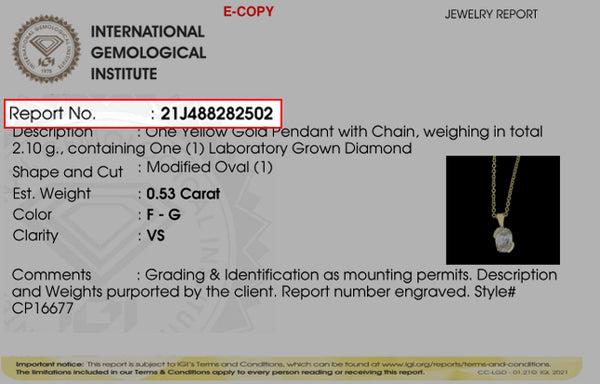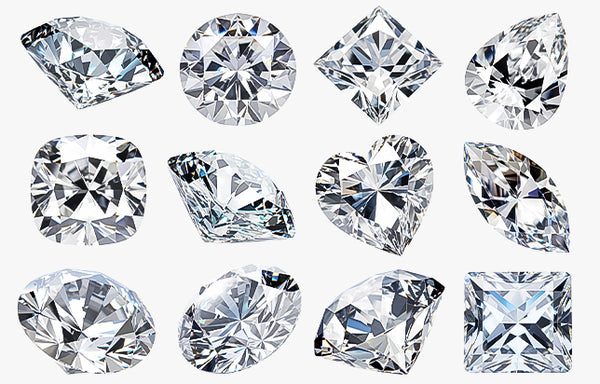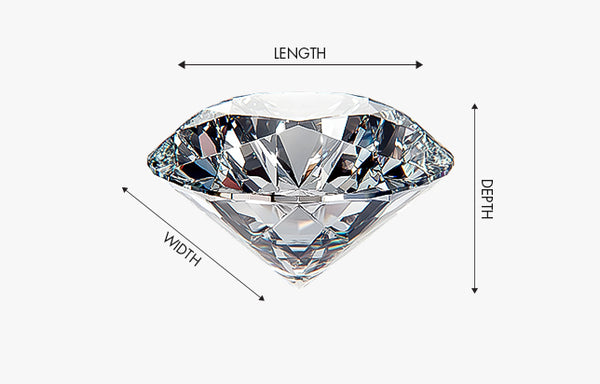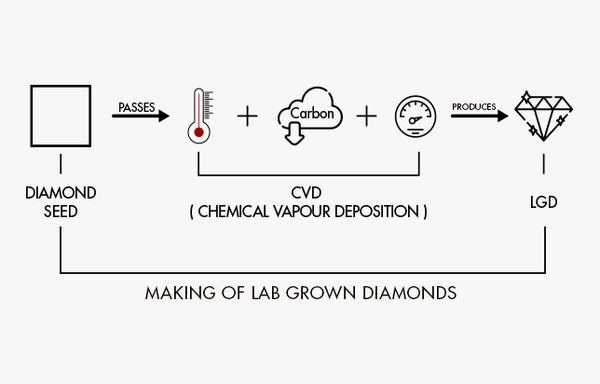In the sparkling world of diamonds, knowledge is your best accessory. When choosing the most elegant and beautiful piece of lab grown diamond jewelry, the only way to ensure its authenticity is through its certification. Understanding your diamond’s certification is just as important as admiring its sparkle.
At Lucira, we believe in full transparency. Every certified diamond comes with clear documentation so you always know exactly what you're buying. So here’s a complete guide on how to read a lab grown diamond certificate like a pro.
What Is A Lab Grown Diamond Certificate?
A diamond certificate or a “grading report” is an official document issued by a gemological laboratory. It details each and every aspect and characteristic of the diamond you are buying, including the 4Cs - the cut, color, clarity and carat weight.
Think of it as your diamond’s ID card. It proves where the diamond stands on quality, appearance and authenticity. It also helps you compare and pick the diamond that you feel offers the most value. Providing these certificates is an industry standard. So make sure you check yours before buying.
The diamonds you buy at Lucira are evaluated by prestigious labs like the International Gemological Institute (IGI) and Solitaire Gemmological Laboratories (SGL). While each of these labs has its own grading and format, the key components of the certificates are quite similar.
Components of a Lab Grown Diamond Certificate
Let’s go through the key components of a diamond certificate and understand what each one of them means.

Certificate Number
The certificate number, also known as the report ID or report number, is a unique number assigned to any specific diamond. You will usually find this number inscribed on the girdle of the diamond, visible under magnification. The number on your specific diamond needs to match the number on the report to certify the authenticity of the information on the report. You can also use this number to look up your report online on the labs website.

Shape and Cutting Style
This section tells about the shape of the diamond you are buying like round, princess, oval, etc, and how it is cut, for example, a brilliant cut, step cut etc. Since different shapes and cuts sparkle differently, this information allows you to understand the look of each cut and select the one that fits your style.

Measurements
This parameter gives you the physical measurements of the diamond - its length, width and depth. Dividing the longest and shortest diameter of the diamond i.e., the length and width gives you a ratio. The closer this ratio is to 1.00, the more symmetrical your diamond is. A ratio higher than 1.00 indicates more of an oval shaped diamond. The measurement also helps to ensure that the diamond matches the carat weight and cut it claims.

Carat Weight
As the name suggests, carat weight indicates the weight of the diamond, where 1 carat equals 0.2 grams. This parameter is commonly linked to the size of the diamond which is a common misconception. The size of a diamond depends on the cut and not the carat weight. A deeper cut might make a diamond look smaller face up, but it might be heavier in its actual weight.

Color Grade
The color grade shows how warm the diamond you are buying is. The lower the color grade, the warmer the diamond. The scale starts from D, which means that the diamond is colourless, and goes to Z, which means that the diamond has a noticeable yellow or brown tint.

Clarity Grade
The clarity grade refers to the inclusions and blemishes inside and on the surface of the diamond. Common grades include:
- FL/IF: Flawless/Internally Flawless
- VVS1/VVS2: Very Very Slight Inclusions
- VS1/VS2: Few Slight Inclusions
- SI1/SI2: Slight Inclusions
- I1–I3: Included (visible flaws)

Polish and Symmetry
Polish is the degree of smoothness on each facet of the diamond. Symmetry indicates how well each facet aligns or intersects with the other. Both of these describe how well the diamond was finished and how precisely it was cut. Look for “Excellent” or “Very Good” in both categories - these affect sparkle, even if subtly.

Fluorescence
When a UV light is shone on the diamond, it glows. This indicates its fluorescence. Higher fluorescence might give your diamond a chalky or milky look in sunlight. It’s graded from None to Very Strong. For most buyers, None or Faint is ideal.

Growth and Process Type
The certificates also mention the growth method and process type of the diamond you are buying. For lab grown diamonds, this could be either the CVD (Chemical Vapor Deposition) method or HPHT (High Pressure, High Temperature). Lucira uses the CVD method, in which a small diamond seed is exposed to carbon-rich gases in an energy-efficient vacuum chamber. This method reduces the diamond’s environmental impact by saving water, cutting down toxic waste and is sustainable.
IGI v/s GIA v/s SGL: What’s the difference?
While all the certificates, IGI, GIA and SGL, provide authenticity to your diamond and are largely similar, they differ in some aspects:
| Parameter | IGI (International Gemological Institute) | GIA (Gemological Institute of America) | SGL (Solitaire Gemmological Laboratories) |
| Global Reputation | Widely accepted worldwide, especially in Asia and Europe | Highly prestigious, Global gold standard | Popular and trusted across India |
| Used for Lab-Grown Diamonds | Yes | Yes (Since 2019) | Yes |
| Certificate Format | Physical and digital; includes images and diagrams | Physical and digital, highly detailed | Compact, simplified reports; digital & print |
| Grading Standards | Consistent and commercial-grade accuracy | Strictest and most conservative | Practical and reliable for Indian consumers |
| 4Cs Coverage (Cut, Color, Clarity, Carat) | Detailed breakdown | Most detailed with specific grading | Standard industry grading |
| Laser Inscription on Diamond | Yes | Yes | Yes |
| Growth Method Mentioned (CVD/HPHT) | Yes | Yes | Sometimes, but not always explicitly stated |
| Inclusions Diagram | Yes (for stones above a certain size) | Yes | Generally not included |
| Turnaround Time | Moderate | Slower (due to the stringent process) | Fastest among the three |
| Fluorescence Grading | Yes | Yes | Yes |
| Polish & Symmetry Grading | Yes | Yes | Yes |
Why Certification Matters?
While looking at all the technicalities in a diamond certificate might seem intimidating at first, once you understand what the certificate is trying to tell you, it is one of the most powerful tools you hold when shopping for diamond jewelry online. That’s why every Lucira diamond comes with an original certification from one of these trusted labs. It’s our promise of honesty, quality, authenticity and transparency.








